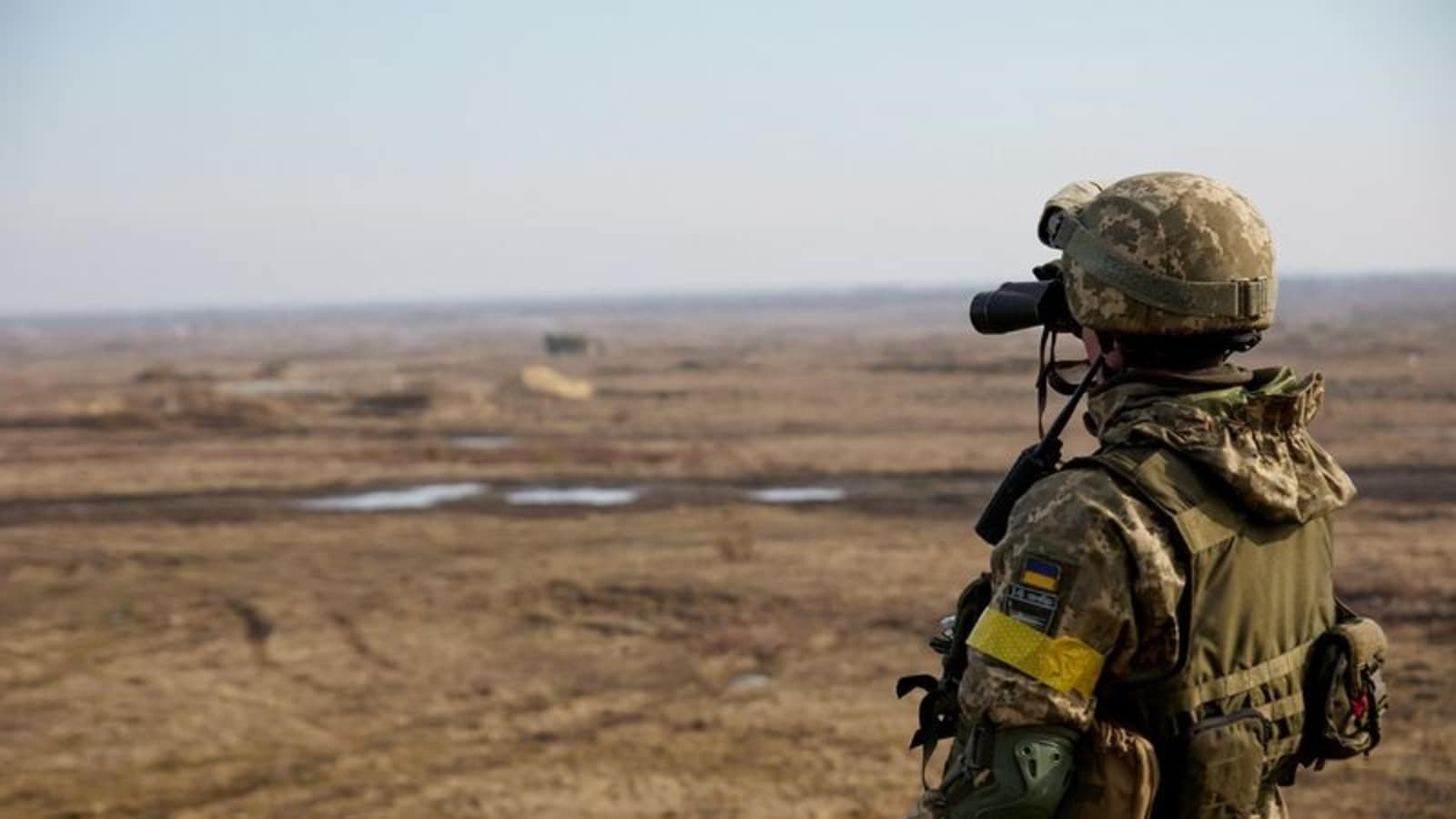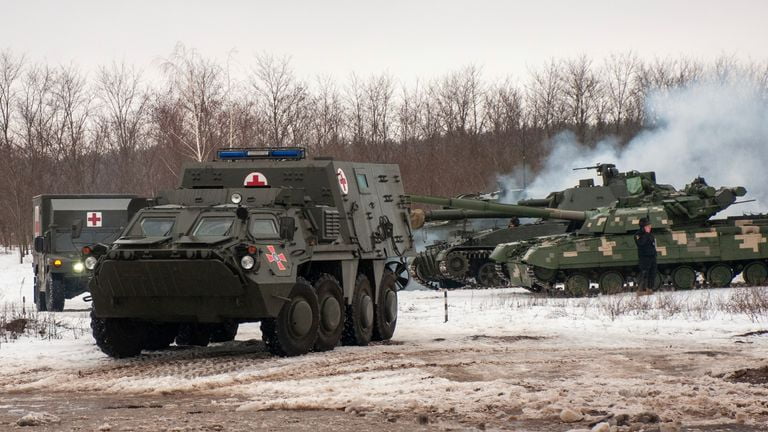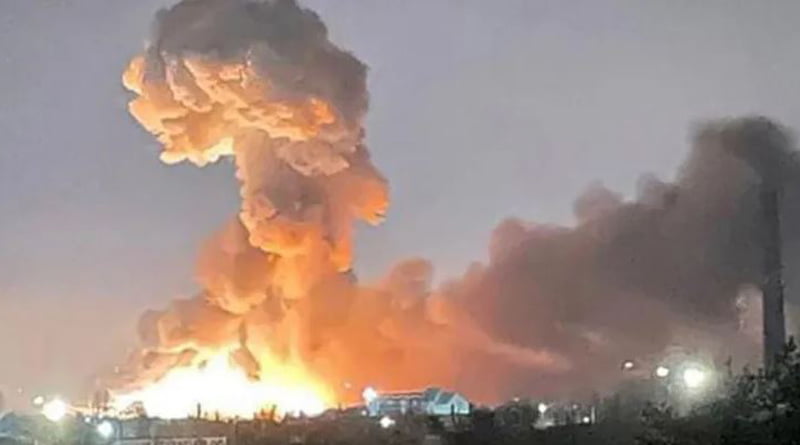Despite A Very Disastrous Attack On Economy Due To Covid-19, Why Are Countries Engaging Into War

Despite A Very Disastrous Attack On Economy Due To Covid, Why Are Countries Engaging Into War
Beyond the disease’s spread and efforts to contain it, the COVID-19 pandemic has had far-reaching economic implications. Concerns have changed from supply-side manufacturing challenges to decreased business in the services sector as the SARS-CoV-2 infection has spread worldwide. The pandemic triggered the second-largest global recession in history, with more than a third of the world’s population put under lockdown at the time.
Due to panic buying, increased use of commodities to fight the pandemic, and disruptions to manufacturers and logistics in mainland China, supply shortages were projected to affect several sectors during the early stages of the pandemic. Price gouging has occurred in the past. There have been several instances of pharmaceutical shortages, with panic buying and resulting scarcity of food and other essential grocery goods in many regions. According to the technology industry, electronic product shipments are expected to be delayed.

Due to a massive increase in COVID-19 instances outside mainland China, global financial markets dropped on February 24, 2020. Stock markets around the world had experienced their worst single-week falls since the financial crisis of 2007–2008 by February 28, 2020. The stock market meltdown of 2020 was the result of this.
Food shortages, price hikes, and market disruption could occur due to the outbreak’s potential instability and associated behavioral changes. Vulnerable populations who rely on markets for their food and those who currently rely on humanitarian aid to sustain their livelihoods and food access would be the hardest hit. The added inflationary effect of protectionist measures such as import tariffs and export bans, as seen during the 2007–2008 global food price crisis, might result in a considerable increase in the number of people facing extreme food insecurity around the world.
Several fashion, sports, and technological events have been cancelled or relocated to the internet. Although the financial impact on the travel and commerce industries has yet to be calculated, it is expected to be in the billions of dollars and growing.
The global economic system is marked by enormous and widespread uncertainty amid recovery and containment. Economic estimates and professional opinion significantly disagree on the overall scope, long-term effects, and predicted recovery. Because there is such a wide range of ideas, risk assessments and contingency plans must be regarded with a grain of salt. The epidemic was also blamed for a significant price hike across the board. The world’s record-high energy prices were fueled in part by a global spike in demand as the world emerged from the COVID-19-induced economic slump, mainly due to rising energy consumption in Asia.

So, why are countries fighting when so much harm has already been done to the global economy, and we are still recovering from the pandemic?
Current War Situation: Russia-Ukraine crisis
As Russia launches an invasion of Ukraine, Russian President Vladimir Putin takes centre stage. Multiple reports of explosions, bombings, and Russian military vehicles entering Ukraine from various points along the Russian border have surfaced overnight, with a mounting number of deaths on both sides.
Many of the president’s closest supporters have been anticipating the invasion of Ukraine for months, if not years.
Putin had already captured the world’s attention earlier this week when he sent soldiers into two pro-Russian breakaway regions in eastern Ukraine and declared their independent states.
Putin’s declaration that Russian forces dispatched into the region will operate as “peacekeepers” has been dismissed by Western officials and analysts, who believe the current step could be a prelude to a broader invasion of Ukraine.
Given the ongoing fighting in the Donbas between separatists backed by Russia and the Ukrainian military, political commentators have predicted that Russia could make such a move for some time.
Nonetheless, with a larger-scale onslaught, Putin’s moves come sooner and look to be more broad-based than many had anticipated.
The Kremlin made new statements on Thursday morning, saying Putin would decide how long the military action would go “depending on its accomplishments and goals.” According to Reuters, Putin’s spokesperson Dmitry Peskov also told reporters that Ukraine must be “liberated” but that “nobody is talking about the occupation of Ukraine.”

Why Ukraine?
There have been rising worries of a military battle between Russia and Ukraine for some time, and eastern Ukraine has been the site of a proxy war between the two countries.
Pro-Russian separatists declared the Donetsk People’s Republic and the Luhansk People’s Republic in the eastern portion of Ukraine shortly after Russia annexed Crimea from Ukraine in 2014, much to the chagrin of the Ukrainian authorities.
Since then, there have been continual clashes and fighting between the Ukrainian army and separatists in the region known as the Donbas.
The “Minsk agreements” were a series of attempts by Germany and France to negotiate peace between Russia and Ukraine. Although there have been times of cease-fire in the Donbas, both Ukraine and Russia have accused each other of breaking the terms of the agreements, and combat has resumed.
The military struggle in the Donbas, commonly called “war,” has already claimed the lives of 13,000 to 14,000 people. Given the civil war-like character of the fight, a reliable estimate of the death toll is difficult to come by.
Putin told reporters on Tuesday that “the Minsk agreements were dead long before Monday’s recognition of the people’s republics,” blaming Kyiv once again for their failure.

What has Russia done?
Russia has denied supporting separatists in eastern Ukraine, but it has been accused of supplying rebels with military weaponry to undermine Ukraine’s government, sovereignty, and political stability.
Following Russia’s invasion and annexation of Crimea, which provoked international sanctions, Western authorities speculated that Putin’s ultimate goal was to invade other regions of Ukraine and install a pro-Russian regime in Kyiv.
Russia has repeatedly denied plans to invade, but the current massing of over 100,000 troops around the Ukrainian border and more soldiers stationed in its partner Belarus for military training has only added to fears of a full-scale Russian invasion.
On Monday, Russia’s recognition of self-proclaimed republics in eastern Ukraine provides an official stamp to Moscow’s backing for rebels in the region. Still, it has previously attempted to “Russify” the area by granting Russian passports and citizenship to locals.
Political observers interpreted the action in 2019 as a cynical foreshadowing of an invasion because if Russia invaded, it could claim it was only doing so to “defend” its nationals from Ukraine. According to Russian official media, residents of Donbas have been fleeing the region in recent days, allegedly as a result of Ukrainian military fire.
Putin justified dispatching soldiers to eastern Ukraine on Tuesday by claiming that Moscow’s recognition of the “republics” was “dictated precisely by the fact that the Ukrainian leadership had publicly proclaimed that they would not adhere to these [Minsk] agreements.”
“What else is there to look forward to?” he asked. Furthermore, when asked if Russia only recognized the self-styled republics’ borders, or also the larger Donetsk and Luhansk regions in which they are located, Putin indicated that the latter was the case: “Concerning the borders within which we will recognize these republics, we did recognize them, which means we recognized their foundational documents, including the Constitution, and the Constitution stipulates their borders within the Donetsk and Luhansk regions.”

What does Putin want?
Essentially, the conflict over Ukraine is a contest for power and influence. In recent years, Ukraine’s administration, now led by President Volodymyr Zelenskyy, has shifted its focus to the West, aiming to join the EU and NATO and move away from Russia’s post-Soviet orbit.
Meanwhile, Putin has described the dissolution of the Soviet Union as a catastrophe and has worked to rebuild Russia’s power base and sphere of influence over former Soviet states such as Belarus, Georgia, and Ukraine — the USSR’s crown jewel and natural buffer state against Europe — during his 22-year rule.
Putin has frequently praised Russia and Ukraine’s historical unity, and he did so again on Monday when he ordered soldiers into the Donbas.
Ukraine’s move toward the West irritates Moscow because it does not want NATO or the EU to expand eastward to include Ukraine, even though Ukraine has no immediate plans to join either organization.
Russia wanted legal guarantees that Ukraine would never be accepted to NATO in December, but these demands were turned down. According to analysts, Putin knew the demands would be rejected, but was able to claim that Russia’s security concerns had been overlooked, which he was able to sell to the Russian public through the media, the majority of which is pro-Putin because it is either state-controlled or has ties to the government.
As a result, it’s no wonder that Russia’s state media has frequently blamed Ukraine and the West for escalating tensions in the Donbas region, accusing both of spreading false information and ignoring Russia’s security demands.
The United States, the European Union, Japan, Australia, and the United Kingdom have all announced new sanctions against Russia, even though the country has previously been sanctioned for its invasion of Crimea, intervention in the 2016 US election, cyberattacks, and other actions.

All-out war in mind?
Close observers of Putin have long suspected that Russia is preparing for more sanctions and has a larger strategy in mind for Ukraine. This theory appears to have been confirmed by recent developments in Ukraine.
In a research note published Tuesday, Timothy Ash, senior emerging markets sovereign strategist at BlueBay Asset Management, said that Putin’s acceptance of the self-proclaimed republics meant he “gets to shoulder the cost of maintaining 3.5 million typically poor individuals.” He understands the ramifications of the sanctions. He withdraws from Minsk 2 and thus abandons his goal for a Federal solution for Ukraine as a method of halting its Westernization. He is also viewed as a nasty man who is snatching land from other countries on a global scale.”
“This only makes sense if this is the start of something greater, and this is all simply about trying to provoke the Ukrainians and the West into some absurd counterreaction,” Ash added.

Russia-Ukraine conflict raises big risks for the global economy
A battle that accelerates inflation disturbs markets and foreshadows catastrophe for everyone from European consumers to leveraged Chinese developers and African households facing skyrocketing food prices is just what the international economy needed.
Russia’s war on Ukraine and the West’s retaliatory sanctions may not signal the start of a new global recession. The combined gross domestic output of the two countries is less than 2% of the global total. Many regional economies have recovered quickly from the pandemic slump and are in good shape.
Nonetheless, the conflict can cause catastrophic economic harm to some countries and industries, resulting in misery for millions of people. Russia is the world’s third-largest petroleum producer and a major natural gas exporter.
Ukraine’s farms provide food for millions of people all over the world. In addition, financial markets are in a precarious position as central banks prepare to reverse years of cheap money policies and hike interest rates to combat inflation. Higher interest rates are expected to restrict consumption and increase the danger of another recession.
“I wouldn’t be fooled by GDP ratios alone…especially at a time when commodity prices are already high, inflation is already high, and unemployment is already high,” said Elina Ribakova, deputy chief economist at the Institute of International Finance, a trade association for banks. “Given where the world economy is right now, it’s a challenging time.”
Russia’s onslaught might hamper Europe’s economic recovery by driving up already-high energy prices. As an energy importer, Europe imports over 40% of its natural gas from Russia. The continent’s economy could be harmed if that energy supply is cut off. High natural gas costs have already pushed up household utility bills for both natural-gas heat and gas-generated electricity, putting a damper on consumer spending.
“Gas prices in Europe are already crushing households and consumers, particularly low-income households,” said Adam Tooze, director of Columbia University’s European Institute, whose 2018 chronicle of the last decade’s financial crisis, “Crashed,” included a chapter on Ukraine tensions.
Due to the high cost of gas, fertilizer manufacturers and other heavy industrial users have had to reduce production. In January, annual inflation in the 19 euro-area countries reached 5.1 per cent, the highest level since records began in 1997.
In a research note, Oxford Economics’ Oliver Rakau and Mateusz Urban wrote, “Escalating tensions put two cornerstones of this year’s predicted growth recovery — a rebound in consumer spending and a boost in industrial activity — at additional risk.”
Natural gas prices, which tend to climb in response to crisis reports, are still almost four times what they were at the start of 2021. On the short-term spot market, Russia sold less gas than usual, raising suspicions that the Kremlin was using gas to argue for approval of its Nord Stream 2 pipeline. Sanctions imposed by Germany’s government have now stopped the pipeline.
A mild winter and additional supplies of liquefied natural gas from the US have allayed some of Europe’s fears about a possible Russian gas shortage. According to analysts, Russia has no interest in a complete gas shutdown, which would result in a significant revenue loss.
The threat to eastern Ukraine fields and Black Sea port exports might limit wheat supplies when global food prices are at their highest level since 2011, and several nations are experiencing food shortages.
According to agricultural economist Alex Smith of the journal Foreign Policy, Ukraine is the world’s fifth-largest wheat exporter, and many of the nations that rely on its wheat “are already facing food shortages due to persistent political instability or outright bloodshed.” Yemen, for example, buys 22 per cent of its wheat from Ukraine, 43 per cent from Libya, and a half from Lebanon.
Inflationary pressures will be exacerbated by rising energy and food prices, which governments and central banks are attempting to alleviate. According to Capital Economics, a worst-case scenario of growing violence and sanctions may push oil prices up to $140 per barrel (international Brent crude had risen beyond $100 on Thursday after Russia attacked Ukraine) and natural gas prices up as well.
According to Capital Economics, this combination would add a significant two percentage points to annual inflation in the world’s wealthiest countries. The world’s largest economy, consumer inflation in the United States increased 7.5 per cent this month compared to a year ago, the highest annual gain since 1982.
If the economy sputters in the face of the military war in Ukraine, central banks may have less leeway — or motivation — to ride to the rescue with stimulus.
According to Jonathan Petersen of Capital Economics, “the current inflationary environment suggests that policymakers have less flexibility than in the past to respond to a slowdown in real activity or a decline in asset prices.”
Stocks have dropped in expectation of higher interest rates and a possible downturn. On Thursday, European and Asian market benchmarks plummeted as high as 4%, while Wall Street futures fell by a considerable daily margin of 2.5 per cent.
In the face of geopolitical concerns, Michael Taylor, managing director at Moody’s Investors Service, warns that investors may flock to Treasurys and other ultra-safe investments, raising the relative credit costs for riskier companies.
“Chinese property developers would be particularly vulnerable to this risk,” Taylor added, as they attempt to refinance substantial amounts of foreign debt this year.
Suppose the US pursues the “nuclear option” of cutting Russia out of the SWIFT payment network, a messaging service that connects thousands of banks and allows them to send payments worldwide. In that case, financial markets might become even more chaotic.
Such a measure would isolate Russia and prevent the transfer of earnings from its energy sector, which accounts for more than 40% of its revenue. On the other hand, shutting Russia out of international banking might backfire, damaging the US and European businesses that do business with Russia.
“As much as there is a risk for Russia, there is a risk for global finance,” said Ribakova of the Institute of International Finance.
Edited and published by Ashlyn Joy




